
Language and Education
Scope & Guideline
Exploring the Nexus of Language and Learning
Introduction
Aims and Scopes
- Multilingual Education Practices:
The journal explores various pedagogical approaches to multilingual education, including the integration of students' home languages in learning environments and the development of inclusive practices that support linguistic diversity. - Language Ideologies and Policies:
It critically examines the ideologies and policies that shape language instruction, including the impact of language policies on educational equity and access for marginalized communities. - Translanguaging and Multimodality:
The journal highlights translanguaging practices that allow learners to use their full linguistic repertoire, as well as the use of multimodal resources in language learning and teaching. - Teacher Education and Professional Development:
There is a strong focus on the preparation and ongoing development of teachers, particularly regarding their understanding of multilingual learners and culturally sustaining pedagogies. - Intercultural Communication and Identity:
The journal investigates how language education intersects with issues of identity, culture, and power dynamics within educational settings. - Research Methodologies in Language Education:
It employs a variety of research methodologies, including qualitative, quantitative, and mixed-methods approaches, to address complex issues in language education.
Trending and Emerging
- Translanguaging Practices:
The concept of translanguaging is increasingly featured, highlighting its role in allowing students to draw on their entire linguistic repertoire to enhance learning and participation. - Culturally Sustaining Pedagogies:
There is a growing emphasis on pedagogies that not only recognize but also leverage students' cultural backgrounds and experiences to enrich language learning. - Digital Literacy and Multimodal Composition:
Recent research explores the integration of digital tools and multimodal approaches in language education, addressing the need for learners to navigate diverse communication forms. - Social Justice in Language Education:
The journal is increasingly focused on social justice issues, examining how language education can address inequalities and promote equity for marginalized groups. - Critical Language Awareness:
A trend towards fostering critical language awareness among students and teachers is emerging, encouraging reflection on language use, power dynamics, and social identities. - Interdisciplinary Approaches:
There is a notable trend towards interdisciplinary research, combining insights from linguistics, education, sociology, and cultural studies to address complex language education issues.
Declining or Waning
- Traditional Language Teaching Methods:
There has been a noticeable decrease in papers focused on traditional, monolingual language teaching methods, as the field increasingly emphasizes multilingual and inclusive approaches. - Standardized Language Assessment:
Research centered on standardized assessments has diminished, possibly due to growing critiques of their effectiveness and fairness in evaluating diverse linguistic backgrounds. - Bilingual Education Models:
While bilingual education remains important, specific models that do not incorporate translanguaging or culturally responsive practices are becoming less prevalent in recent literature. - Language Acquisition Theories:
The focus on classical language acquisition theories without consideration of sociocultural factors appears to be waning, as contemporary research emphasizes more integrative and context-sensitive approaches. - Linguistic Competence as a Sole Focus:
There is a shift away from viewing linguistic competence in isolation, with more emphasis on functional and critical language use in context, reflecting changes in educational priorities.
Similar Journals
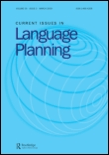
Current Issues in Language Planning
Navigating the Future of Language Planning and PolicyCurrent Issues in Language Planning is a prestigious academic journal published by Routledge Journals, Taylor & Francis Ltd, focusing on the critical study of language planning and policy. Established in 2008 and converging until 2024, this journal plays a pivotal role in the field of linguistics and education, as evidenced by its impressive Q1 rankings in both Education and Linguistics and Language categories. With a robust Scopus ranking, placing it in the 94th percentile for Arts and Humanities and Social Sciences, it offers a highly respected platform for researchers and professionals to share innovative ideas and findings. Although it is not an open access journal, it provides valuable insights into current debates and developments in language theory and planning, making it indispensable for scholars and students dedicated to advancing their expertise in these vital areas. The journal's contributions are essential for understanding the intricate relationship between language, society, and education policy.
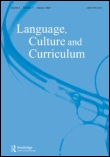
Language Culture and Curriculum
Advancing Language Education Through Cultural InsightsLanguage Culture and Curriculum is a premier academic journal published by Routledge Journals, Taylor & Francis Ltd, dedicated to advancing knowledge in the fields of Education and Linguistics. With a distinguished history since 1988 and converging through to 2024, this journal is highly regarded, reflecting its exemplary standing with a 2023 Q1 ranking in both Education and Linguistics. Currently among the top 3% of publications in Language and Linguistics and ranked 27th in Social Sciences, Language Culture and Curriculum fosters the exploration of language education within diverse cultural contexts. Through rigorous peer-reviewed research, it serves as an essential platform for researchers, educators, and policymakers alike, promoting innovative practices and theoretical frameworks in language teaching and curriculum development. Although it does not offer Open Access, the journal remains an invaluable resource in academic circles, supporting scholarly discourse and advancing educational methodologies.
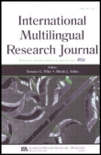
International Multilingual Research Journal
Fostering innovative dialogue in education and linguistics.The International Multilingual Research Journal, published by Routledge Journals, Taylor & Francis Ltd, is a leading platform for the dissemination of innovative research in the fields of Education and Linguistics. With an impact factor reflecting its rigorous academic standards and a Q1 ranking in both relevant categories, this journal is dedicated to advancing the understanding of multilingualism and its implications globally. It serves as an essential resource for researchers, educators, and practitioners who seek to explore the complexities of language and learning across diverse cultural contexts. Since its inception in 2010, the journal has converged a wealth of scholarly articles that address contemporary issues in language use and pedagogical practices. The journal adheres to the highest research integrity standards and promotes open dialogue among scholars, making it a vital tool for those engaged in this expanding field. With its strong positioning in prestigious databases like Scopus, the International Multilingual Research Journal is committed to enriching the academic community and fostering interdisciplinary collaborations.

Language Teaching
Fostering dialogue on the latest trends in language education.Language Teaching, published by Cambridge University Press, is a premier peer-reviewed journal that has been at the forefront of the linguistics and language education field since its inception in 1969. With an impressive impact factor positioning it in the top tier (Q1) of its category, this journal is ranked 22nd among 1,088 in the Arts and Humanities field and maintains an outstanding 98th percentile ranking. Focusing on innovative research and methodologies in language teaching and learning, Language Teaching provides a vital platform for discussing the latest developments in pedagogy, applied linguistics, and curriculum design. Although it does not offer open access options, it reaches a broad audience of researchers, educators, and practitioners dedicated to enhancing language instruction across various contexts. The journal continues to evolve, with plans to cover emerging trends and challenges in language education until 2024, making it an essential resource for anyone invested in the teaching of languages.

Language and Sociocultural Theory
Connecting Cultures through Language ScholarshipLanguage and Sociocultural Theory, published by EQUINOX PUBLISHING LTD, stands as a vital resource for scholars in the domains of linguistic studies and cultural theory. With its ISSN 2051-9699 and E-ISSN 2051-9702, this UK-based journal has consistently achieved Q1 rankings in both Cultural Studies and Linguistics and Language as of 2023, demonstrating its significant impact within the academic community. The journal's position is further affirmed by its rankings in Scopus, where it occupies the 80th percentile in Cultural Studies and the 72nd percentile in Linguistics and Language, making it a leading platform for cutting-edge research. Though not an Open Access journal, it provides critical insights into the interconnectedness of language and sociocultural dynamics, making it essential reading for researchers, professionals, and students eager to explore the complexities of human communication. Spanning converged years from 2014 to 2023, the journal presents a rich collection of scholarly articles that strive to advance the field and inspire further academic inquiry.
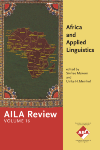
AILA Review
Unveiling insights into language acquisition and application.AILA Review, published by John Benjamins Publishing Co, stands as a pivotal resource within the field of linguistics and language studies. With an ISSN of 1461-0213 and an E-ISSN of 1570-5595, this journal is dedicated to fostering innovative research and scholarship that advances the understanding of language in its diverse forms and applications. Spanning significant years from 2003 to 2016 and 2018 to 2024, AILA Review has established itself with a commendable reputation, reflected by its Q2 ranking in Linguistics and Language and notable Scopus rankings, positioning it in the 73rd percentile among Arts and Humanities. As an essential forum for researchers, professionals, and students alike, the journal invites high-quality contributions that engage with theoretical and practical aspects of language acquisition, multilingualism, and applied linguistics, enhancing discourse in these vital areas of study. Although not an open-access journal, its commitment to quality ensures that publications are widely recognized and cited, fostering impactful scholarly exchanges.

Porta Linguarum
Advancing linguistic insight for a transformative educational landscape.Porta Linguarum, published by UNIV GRANADA in Spain, is a pioneering journal dedicated to the fields of linguistics and language studies, with a dual focus on the educational implications and applications within these disciplines. Launched in 2008 and continuing its impactful contributions into 2024, the journal is recognized for its rigorous peer-reviewed articles that address contemporary language issues, pedagogical approaches, and linguistic research, evidenced by its notable rankings in the 2023 Scopus metrics. Porta Linguarum holds a distinguished Q1 classification in Linguistics and Language, alongside a respectable Q3 placement in Education, marking it as a valuable resource for academics and practitioners alike. With an impressive ranking of 231 out of 1088 in the Arts and Humanities category and a strong 78th percentile ranking for Language and Linguistics, this journal facilitates the exchange of innovative ideas and promotes scholarly discourse. Although currently not adopting an open access model, it remains an essential platform for advancing knowledge in linguistics and education.
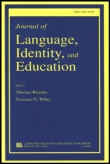
Journal of Language Identity and Education
Advancing Research at the Intersection of Language and EducationJournal of Language Identity and Education, published by Routledge Journals, Taylor & Francis Ltd, is a leading interdisciplinary journal that delves into the evolving intersections of language, identity, and educational practices. With a notable impact factor reflected by its positioning in the Q1 quartile in both Education and Linguistics & Language categories as of 2023, this journal is dedicated to publishing high-quality research that informs policy and practice within the fields of language education and identity formation. It enjoys a reputable standing in academic circles, highlighted by its impressive rankings in Scopus, where it is placed in the 96th percentile within the Arts and Humanities and Social Sciences categories. Scholars, educators, and students alike will benefit from the journal's rigorous scholarship and diverse perspectives. The journal actively contributes to the discourse on language as a fundamental component of identity, creating a vital platform for dialogue and research that resonates with educators and practitioners globally.
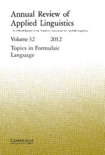
Annual Review of Applied Linguistics
Illuminating insights in language and psychology.The Annual Review of Applied Linguistics, published by Cambridge University Press, stands as a premier journal in the realm of linguistics and psychology, with an impressive impact factor identifying its significance: ranking in the Q1 quartile across both fields in 2023. With an ISSN of 0267-1905 and an E-ISSN of 1471-6356, this journal endeavors to provide comprehensive and insightful reviews covering an array of topics within applied linguistics, thus supporting researchers, professionals, and students in advancing their understanding and expertise. Operating from its base in Cambridge, United Kingdom, the journal has maintained a consistent commitment to scholarly excellence since its inception, accelerating discussions on critical issues and emerging research trends from 2005 to 2024. Notably, it holds a prestigious position in Scopus, ranked #26 in Language and Linguistics and #30 in Social Sciences, showcasing its influence and contribution to the scholarship in the field. The Annual Review of Applied Linguistics thus stands as an essential resource for anyone engaged in linguistic research and application.

Journal of Language and Literacy Education
Empowering Educators Through Cutting-Edge ResearchThe Journal of Language and Literacy Education, published by the University of Georgia, College of Education, is an essential resource for researchers, educators, and students engaged in the dynamic field of language and literacy. With an ISSN of 1559-9035 and a commitment to open discussions on contemporary educational practices, this journal aims to bridge the gap between theory and practice, fostering innovative pedagogical approaches that resonate with diverse learning communities. Operating from 427 Tucker Hall, Athens, GA 30602, the journal holds a notable position in the Social Sciences - Education category, ranked at #854 out of 1543 in Scopus, with a 44th percentile standing. Spanning a converged period from 2020 to 2024, it offers a platform for cutting-edge research, critical reviews, and discourse surrounding language acquisition, literacy development, and educational strategies. Engaging with this journal not only enriches academic pursuits but also elevates professional practices within the field.